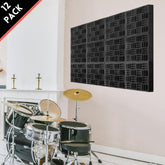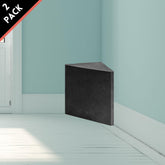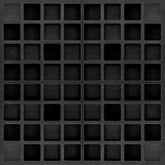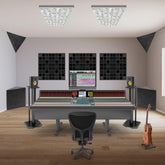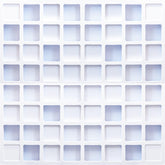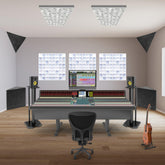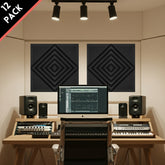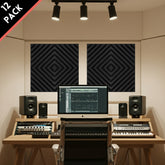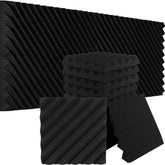Advanced EQ Techniques for a Balanced Mix
Advanced EQ Techniques for a Balanced Mix

Understanding the Basics of EQ
What is Equalization?
Equalization involves adjusting the balance between different frequency components within an audio signal. By boosting or cutting specific frequency ranges, you can shape the tonal characteristics of individual tracks or the overall mix.
Types of EQs
- Parametric EQ: Offers precise control over frequency, bandwidth (Q), and gain, making it ideal for detailed adjustments.
- Graphic EQ: Provides control over fixed frequency bands with sliders, typically used for broad adjustments.
- Shelving EQ: Boosts or cuts frequencies above or below a certain point, commonly used for high and low frequencies.
Identifying Problem Frequencies
Finding Resonances and Problem Areas
Resonant frequencies can make your mix sound harsh, muddy, or boomy. To identify these problem areas:
- Sweep Method: Use a narrow Q setting and boost the gain on your parametric EQ. Sweep through the frequency spectrum to find resonances. Once identified, reduce the gain to attenuate the problem frequency.
- Spectrum Analyzer: Use a spectrum analyzer plugin to visualize the frequency content of your tracks and spot peaks that may need adjustment.
Common Problem Frequencies
- 200-400 Hz: Can cause muddiness, especially in vocals and guitars.
- 2-4 kHz: Can lead to harshness, particularly in vocals and cymbals.
- 5-10 kHz: Can result in sibilance in vocals and excessive brightness in instruments.
Dynamic EQ for Precision
What is Dynamic EQ?
Dynamic EQ combines the functionality of an EQ with that of a compressor. It allows you to apply EQ adjustments dynamically, based on the input signal level. This technique is particularly useful for controlling problematic frequencies that only become an issue at certain volumes.
Using Dynamic EQ
- De-essing: Apply dynamic EQ to control sibilance in vocals. Target the 5-10 kHz range, reducing gain only when sibilance becomes prominent.
- Resonance Control: Use dynamic EQ to attenuate resonant frequencies that only appear when a track gets louder, without affecting the entire frequency range.
- Creative Effects: Enhance certain elements of a track by boosting frequencies dynamically, adding presence or impact as needed.
Mid/Side EQ for Stereo Balance
What is Mid/Side EQ?
Mid/Side EQ allows you to process the mid (center) and side (stereo) elements of your audio separately. This technique provides greater control over the stereo image, enabling you to enhance the width and depth of your mix.
Applications of Mid/Side EQ
- Vocal Clarity: Boost the mid frequencies to enhance vocal clarity without affecting the stereo elements of the mix.
- Stereo Width: Apply subtle boosts or cuts to the side channels to widen or narrow the stereo image.
- Balance and Focus: Use Mid/Side EQ to balance the elements in the center and sides, ensuring that lead elements remain clear while maintaining a full stereo field.
Mid/Side EQ in Practice
- Enhancing Width: Increase the high frequencies on the sides to add brightness and width without affecting the center.
- Tightening the Low End: Cut low frequencies on the sides to focus the bass in the center, creating a tighter and more defined low end.

Linear Phase EQ for Transparency
Understanding Phase Issues
When using EQ, particularly in multi-mic recordings, phase issues can arise due to the timing differences between frequencies. These phase shifts can cause comb filtering, resulting in a hollow or thin sound.
What is Linear Phase EQ?
Linear phase EQ maintains the phase relationship between frequencies, avoiding the phase shifts that can occur with traditional EQs. This makes it ideal for tasks where transparency and phase integrity are crucial.
When to Use Linear Phase EQ
- Mastering: Use linear phase EQ in the mastering stage to make transparent adjustments without affecting the phase of the mix.
- Complex Mixes: In complex mixes with multiple layers, linear phase EQ can help avoid phase issues, ensuring that each element remains clear and defined.
- High-Frequency Adjustments: When adjusting high frequencies, linear phase EQ ensures that the tonal balance remains intact without introducing phase distortion.
Using EQ for Creative Sound Design
Beyond Correction: Creative EQ Techniques
EQ is not just for corrective purposes; it can also be used creatively to shape and define the character of your mix. Here are some creative ways to use EQ:
- Enhancing Presence: Boost mid to high frequencies on lead instruments or vocals to make them stand out in the mix.
- Creating Space: Cut frequencies in certain elements to carve out space for other instruments, helping to create a more balanced and spacious mix.
- Adding Warmth: Use low-shelf EQ to add warmth and body to instruments, particularly bass and low-mid elements.
Layering EQs for Effect
Sometimes, a single EQ pass isn’t enough. Layer multiple EQs to achieve complex sound shaping:
- Serial EQ: Apply one EQ to correct issues, then another for creative shaping. This allows you to address problems without sacrificing creative control.
- Parallel EQ: Split the signal and apply different EQ settings to each path, then blend them together for a unique tonal effect.
Conclusion
Advanced EQ techniques are essential for achieving a balanced, polished mix. By mastering dynamic EQ, Mid/Side EQ, and linear phase EQ, you can gain greater control over your mix, ensuring that each element fits perfectly within the frequency spectrum. Whether you're correcting issues or applying creative touches, these techniques will help you craft mixes that are both sonically pleasing and professionally polished.
ABOUT AUTHOR
House Live Engineer of Free Bird, a live house with the history of South Korea's indie music scene.
Single album/Regular album/Live recording, Mixing and Mastering experience of various rock and jazz musicians

